It’s been a full summer since we got our grubby mitts on one of the first sets of the new DT Swiss forks in the country.
It’s difficult not to look back at the glory months of dust, short sleeves and endless sunshine that typified the summer of 2018 without thinking that everything was perfect. It’s hard to be hard on a component when you’ve got back from yet another ride grinning ear-to-ear and aching to get back out on primo trails once again.
We’ve taken a step back though (helped by a return to early darkness and more autumnal weather) to ponder these stealth bomber forks. We’ve gone back to riding other options, refitted the all-blacks. Time and again, we’ve come to the conclusion that these are quite special.
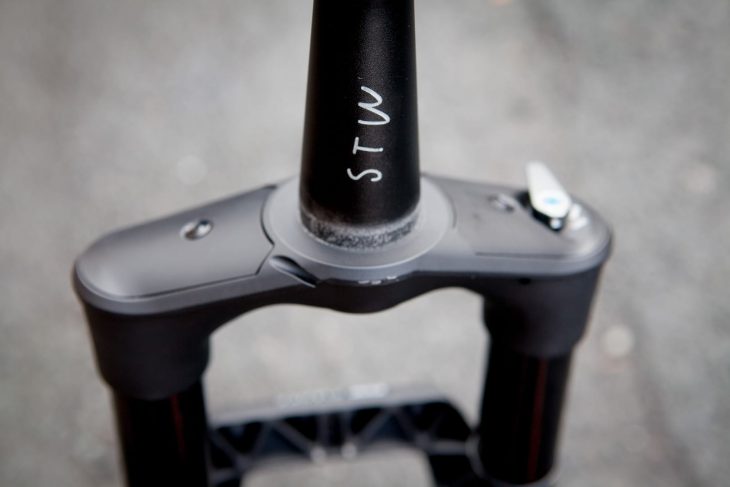
The F535 ONE is the first ground-up fork that DT Swiss has released, well, ever really. It has been in the suspension market for a long time, but has always taken at least some design cues from earlier models and its Pace heritage. The boffins at DT Swiss also spent a Very Long Time designing and testing the fork prior to release – years in fact. The company knew that it was a make-or-break moment for it.
To realistically break the stranglehold that RockShox and Fox have on the market, the F535 ONE would not only need to be quite special performance-wise, it would need to be ultra-reliable and maybe even offer a little more on top. It’s a big ask, but one that the design team clearly seem to have taken to heart.
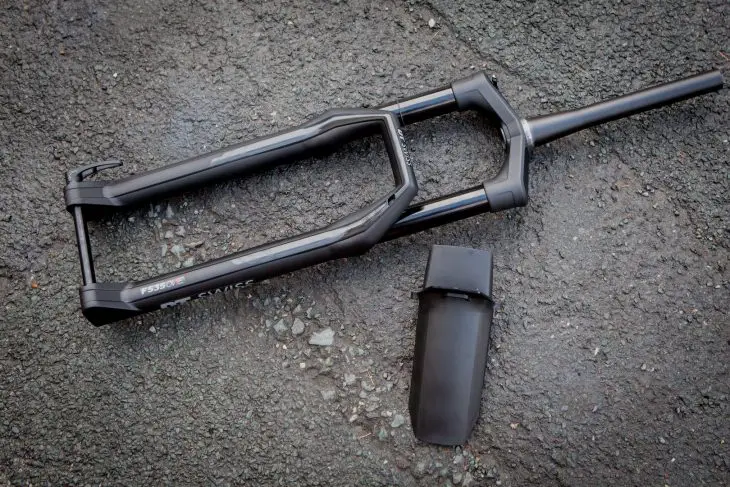
The App
Now, it is at this point in a review that we’d normally start giving a run down of the specification. 29in, 150mm travel, Boost, yadda-yadda. Don’t worry – we will come on to that, but before we do, I’m going to tell you about the DT Swiss web app.
It isn’t the first or only company to provide set-up guidance or an electronic manual to help the end consumer dial in their fork, but I’m willing to bet that it is the first to have spent an entire year testing and calibrating it after the fork is production-ready. It is also the very first time that I have simply been able to follow the recommended settings and go out for a ride. No ifs, no buts, no changes.
Air pressure and damping was as near as damn it perfect. While not make-or-break, it was a welcome surprise and real bonus, especially if you are the kind of rider that would rather not spend an age tweaking settings (this will become a running theme with the fork, but you’ll have to bear with me first).
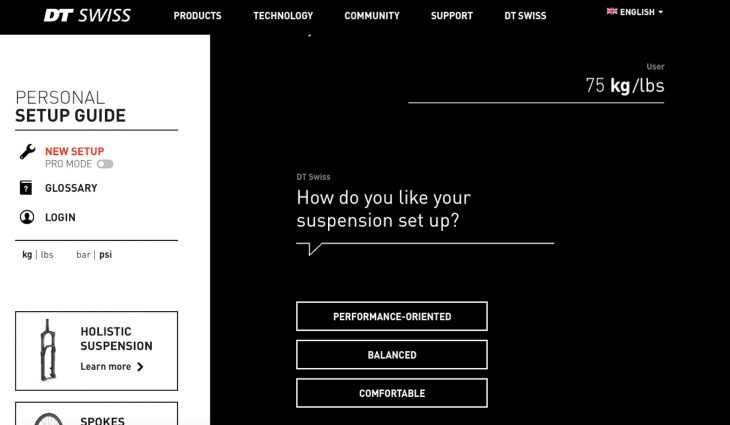
Tell Me About The Goddamn Fork!
Ok, back to the beginning. The DT Swiss F 535 ONE is designed as an “all mountain” fork. While it is certainly capable of the rigours of full-on enduro, that is slightly beyond its design remit (though it hasn’t stopped a few pairs being raced at the highest level). Equally, the fork isn’t intended to be an XC, lightweight option either. We wouldn’t be surprised if DT Swiss fill those gaps fairly swiftly, but for the time being, we reckon the F 535 ONE fits the requirements of most riders.
The Boost-spaced fork is available in both 27.5in/44mm offset and 29in/51mm offset options (ours is the 29in/27.5+in version) and 130, 140, 150 and 160mm travel choices. We went for 150mm.
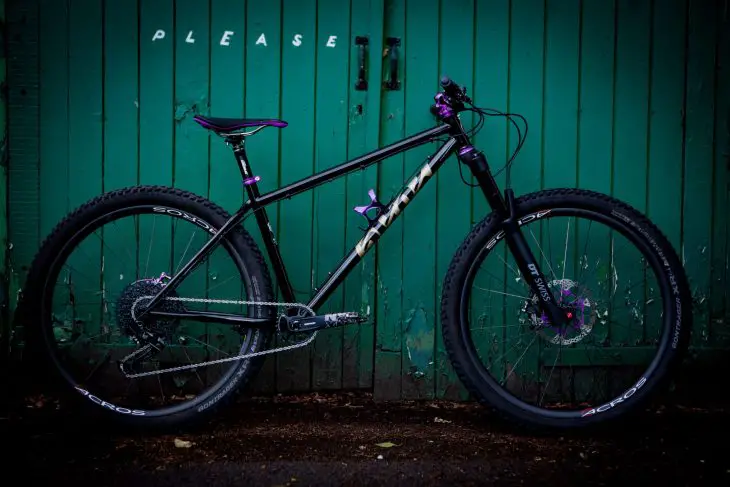
The fork’s spring is an interesting hybrid of a small coil spring, designed to give an extremely supple first 30mm of travel, and a large volume air spring with self-equalising positive and negative chambers for the remainder of the travel. DT Swiss calls this COILPAIR. We call it quite clever.
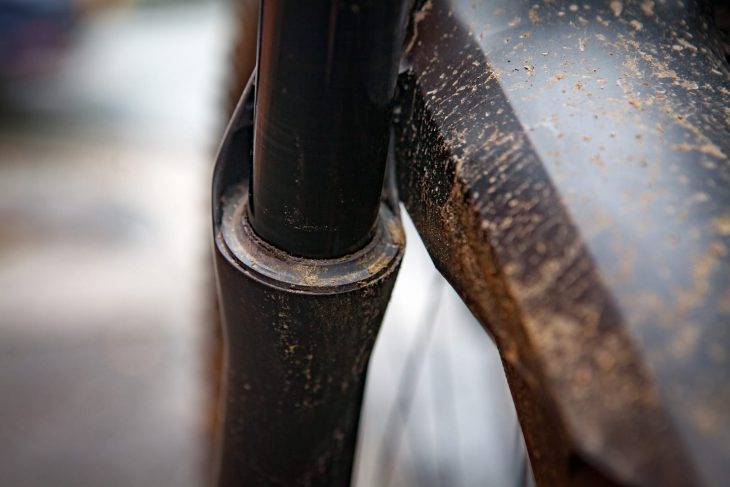
Now, the damper side. There’s a little more going on with its compression damping than first meets the eye. DT Swiss has a fancy name, obviously. PLUSHPORT is essentially an opening in the low-speed compression circuit that is slowly closed by a floating piston as the fork moves through its travel.
This position-sensitive low-speed compression means once again that the fork is initially very supple and plush at the start of the travel, which should mean tonnes of grip. Then, rather than plunging through the rest of its travel, the compression damping ramps up providing mid-stoke support when it is most needed.
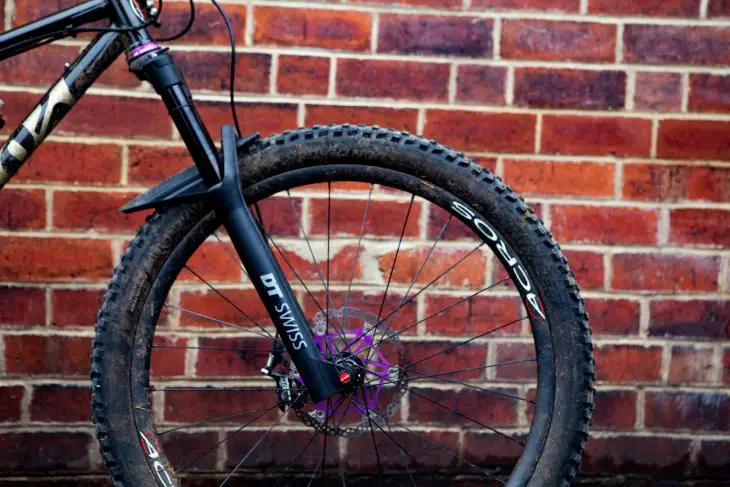
For the first 20% of the fork’s travel, the PLUSHPORT is completely open to let the oil flow with minimal resistance, significantly improving the fork’s small bump response.
Between 20-50% of the fork’s travel, the bores of the PLUSHPORT are partially closed off by the piston rod, which increases low-speed compression damping for more mid-stroke support.
Once the F 535 ONE pushes beyond 50% of the travel, all holes of the PLUSHPORT are closed, and the oil is forced through the significantly stronger high-speed compression valve.
All in all, the fork should feel much more coil-like, with a more linear spring rate. Got that? Good.
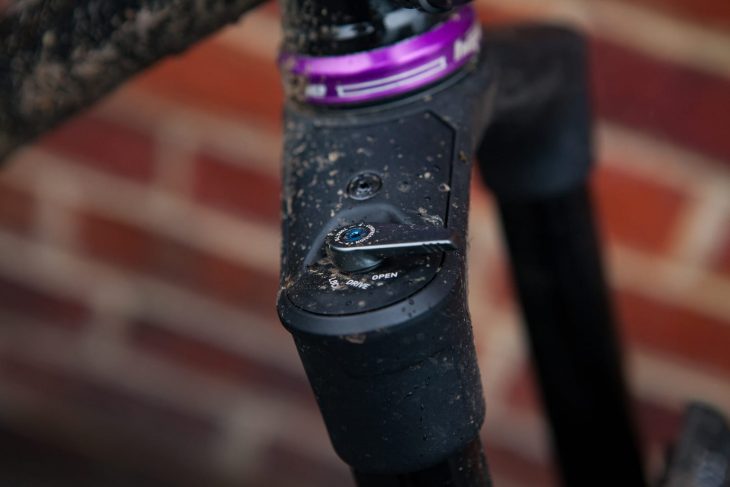
While we are on damping, low speed compression can be adjusted from a lever on the right hand side of the crown. It’s the only visible adjustment on the fork and is kept simple with a lock-out, “drive” and open setting.
At £925, the F 535 ONE is far from a bargain, but it compares favourably to other top-end forks such as the Fox 36 Float GRIP2 (£1139), Formula Selva S (£1060),Cane Creek Helm (£950), MRP Ribbon (£850-£900), and the RockShox Pike RCT3 (£869).
Try For Yourself
DT Swiss has recognised that it has a lot of winning over to do to break back into the suspension market. A good product is the starting point, but most riders will want to try for themselves before spending £900. UK dealers have demo sets available to allow you to try for yourself, which seems like a good idea to us. We’d expect to be able to test a bike, why not a fork that isn’t much cheaper?
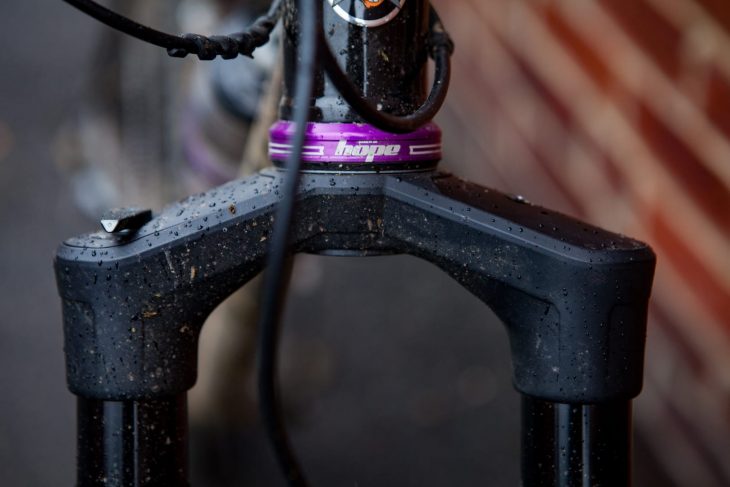
Clean & Crisp
Time for another interruption. You’ll have already noticed that the F 535 ONE is pretty damn clean looking. Compared to the Formula Selva that I last tested, it is positively minimalist. Other than the previously mentioned lock-out, there are no dials, buttons or knobs on display at all. Even the air valve is hidden away under a flush-fitting cover.
Thumbs up to those DT Swiss engineers for designing an integrated (removable) mud-guard as well.


Back to damping
A small blue knob at the top of the damper leg allows for some high-speed compression tweaking. Eight clicks in total. There is also a small lever at the top of the right leg, giving three positions – locked out, open and an in-betweeny “Drive” setting. Finally, at the bottom of the same fork leg is rebound adjustment. This is not hidden behind a cover, but it is hidden from view.
From the app through to execution, DT Swiss has designed set up on the F 535 ONE to be a one-time only affair. All the adjustments require a T10 Torx key (as do the caps to the forks). This would be a bit of a pain if there wasn’t one neatly hidden away in the DT Swiss axle. I had one of those giddy moments when I could do little other than clap my hands when I discovered it. It might not make the fork ride any better, but it’s lovely when you know the designer has thought through the little details.

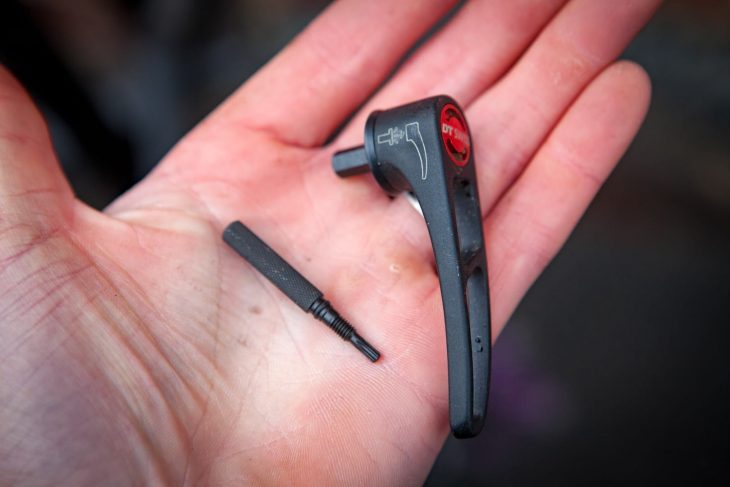
DT Swiss F 535 ONE Fork Specifications:
- Mid-travel trail & all mountain fork
- 27.5in and 29in wheelsize options
- Available with 130-160mm travel (in 10mm increments)
- 35mm diameter stanchions
- Liné-Air dual air spring w/Coilpair coil ‘helper’ spring
- Incontrol damping system
- Adjustments: air pressure, air spring volume, 3-position Open/Drive/Lock compression lever, low-speed rebound & low-speed compression
- Available with remote handlebar adjuster
- Hidden damping adjustments and axle end
- Optional bolt-on mudguard
- Offset: 44mm (27.5in) & 51mm (29in)
- Max tyre clearance: 27.5×2.8in (27.5in)
- Dropouts: 110x15mm
- Claimed weight: 2020g (27.5in), 2090g (29in)
- Actual weight: 2100g (29in, uncut steerer)
- From: Madison
- UK servicing support: TF Tuned
- RRP: £924.99 (crown adjust), £974.99 (remote adjust)


Can We Just Ride The Bloody Thing?
Set up is an unsurprisingly simple affair, thanks to that app. Enter your weight and preferred ride feel, whack in some air, adjust rebound as per recommendations, and off you go. That’s it.
DT Swiss recommends that you should run the compression damping fully open initially. With a raised eyebrow, I did as the engineer bods said. I climbed on the bike, and gave the forks the “I know what I’m doing here” car park bounce. Urgh. They pushed a fair way through their travel pretty easily and just felt, well, underdamped in every way. Pretty bad, actually. Hmm.
Undeterred, I hit the trail, thankful that there was room for adjustment and ready to reach for that integrated T10.
The Torx key stayed where it was that first ride.
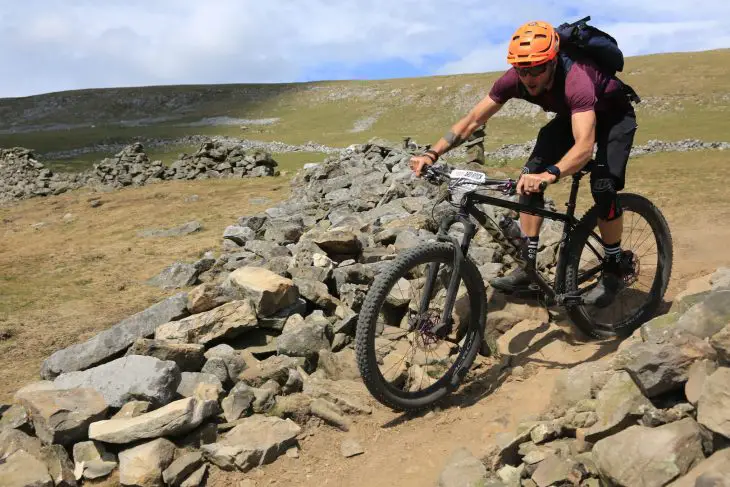
Once being ridden rather than bounced around, all the tech made sense. The fork was indeed as supple as anything else I’ve ever ridden. Even small roots and rocks were swallowed up consummately. For me to get this kind of performance on any fork a few years ago, I’d have had to compromise somewhere else.
Nudging downhill, the fork holds its mid-travel as well as any other current fork on the market. What really impressed me was how composed the fork felt over a variety of terrain, with no adjustment from me. From smooth, swooping G-out style berms through to ugly, rough and technical terrain, there was no compromise between compression damping and sensitivity.
The best description of the fork feel is coil-like (I promise I thought this before reading the DT Swiss marketing material). There was no obvious transition as the PLUSHPORT shifted from open to closed and vice versa; just smooth, predictable travel and the kind of mid-stroke platform that I’ve only been able to achieve previously by running a much firmer compression tune. I can’t overstate how clever this little trick that DT Swiss has performed is.
I’m not the fastest rider in the world, but push hard enough that I’ve been drawn into running highly damped compression tunes in the past to counter blowing through travel when I least needed it. This inevitably means a firmer feeling fork in the initial stroke, which can get fatiguing, as well as compromising grip. It was one of those things that I accepted as “just the way it is” for a while, but it is great to see fork companies upping their game when it comes to a fork that works optimally well all the way through its travel.

The F 535 ONE isn’t sold as a full-on enduro fork, and while I didn’t notice any discernible flex, it maybe doesn’t feel quite as burly as say a Fox 36 or RockShox Lyrik. Think more along the lines of a Pike. Either way, the whole package of chassis and damping meant the fork quickly inspired confidence and if Strava is to be believed, let me hit trails faster than I ever have before (again, with a little nod to the unusually dry conditions much of the time).
For me, as a 75kg-ish rider in kit, the progression curve of the fork felt about right. I rarely found full travel (regularly came close though), but the fork never felt stingy or harsh. When I did, there was no obvious bottom out clunk. Plastic volume spacers are available if you want to tweak the feel. The fork comes with two out of a possible three fitted and I felt no need to add the third.
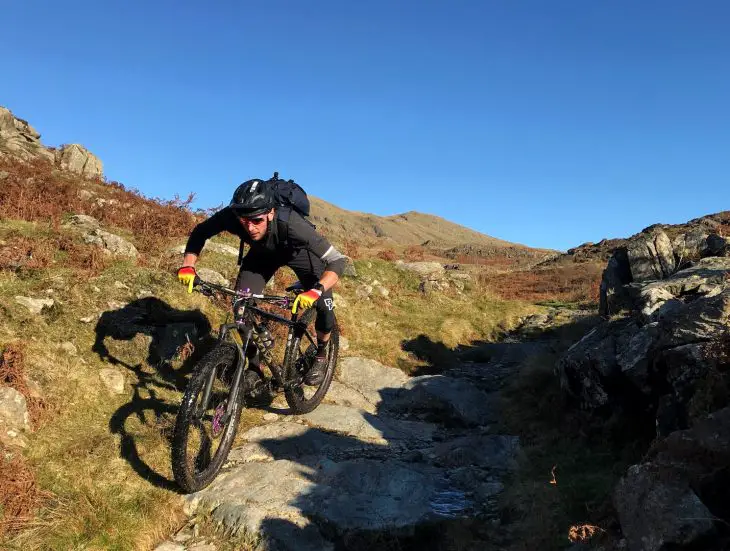
This overall ride feel was achieved without wavering from the initial settings. In the name of science, I tried adding a few clicks of compression damping – which left the fork just feeling firmer than necessary for my riding style. I gradually backed them off until I ended back up at the open setting, which is where I stayed.
Equally, with rebound, the recommended setting felt unusually fast when deliberately bouncing the fork, but on the trail there was no pogoing, nor did it feel uncontrolled. I would have been absolutely happy leaving it as it was, and after some “I suppose I should really see what the adjustment feels like” fettling, I ended back up where DT Swiss told me. Huh.
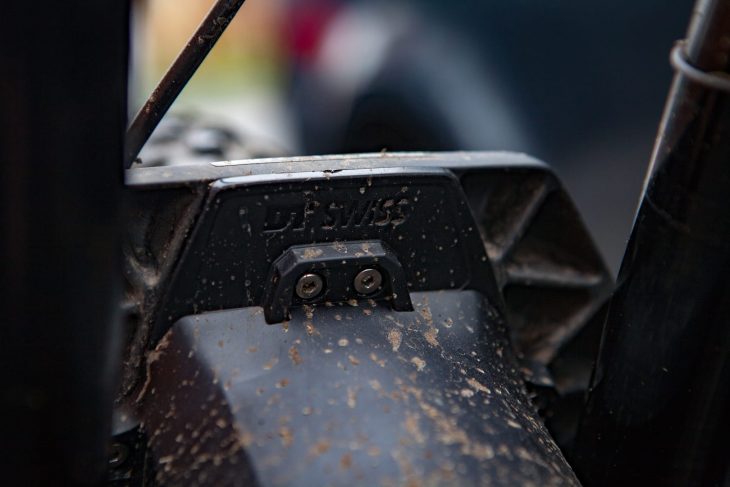
On to the little details, I was lucky enough to be able to leave the mudguard off for a long chunk of test time, thanks to the perma-summer we experienced through most of the test.
Come the rain though, it bolted on easily enough (although the omnipresent T10s felt a bit fiddly here). It is roughly as effective at keeping spray off your face as a zip-tied EnduroGuard style guard, but quicker to fit and who wants zip-ties on their posh fork if they can help it?
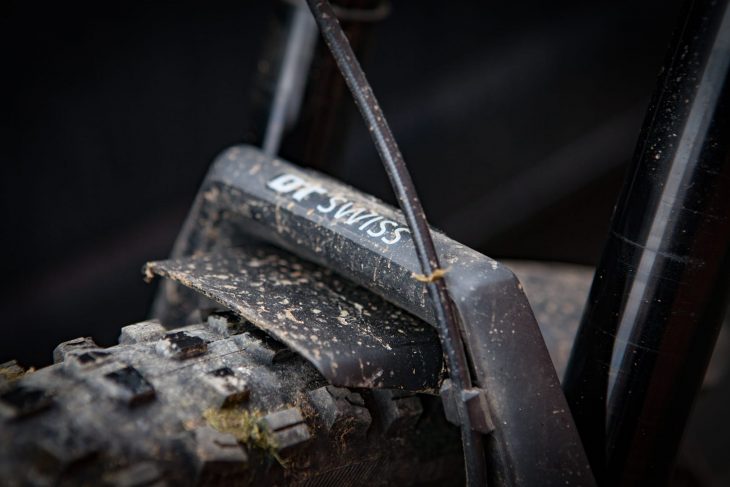
I’m not usually one for using lock-outs on climbs, so the fork stayed fully open to start with. Off-road, I kept it that way, but I did notice the fork once again felt more “reboundy” when climbing on tarmac, leading to a bit of a bouncy ride. Switching to Drive or Lock modes countered this – with the usual caveat about remembering to switch back.
If you are the kind of person that likes to switch between modes frequently, a bar remote option is available.
Overall
After many years of feeling the need to twiddle dials, adjust air pressures and play around with tokens, usually on an ongoing basis throughout my ownership of a fork – depending on trail conditions and where I want to fall on the sensitivity/damping compromise – it took a big change in mindset to simply switch off thinking about adjusting the fork and just enjoying the ride.
I’m not a natural born tinkerer, so in many ways, it was a welcome relief to feel like I had already landed on the best settings for me. I’m sure there will be some people who don’t want to give up the ability to play with settings to their hearts delight, and I fear that they may instantly be turned off by the F 535 ONE.
DT Swiss has managed something really special though – I’m sure we’ve all climbed on that mate’s bike that “doesn’t feel quite right”, taken it for a spin and found the settings all over the place. For the average consumer, I’d wager that the F 535 ONE will mean that they are riding a significantly better set up fork. For those of us who are more comfortable with adjusting settings, it will mean much less time twiddling, much more time riding. That can only be a good thing right?
It’s been a long time since I’ve been this impressed with a mountain bike product – probably since the first reliable dropper posts. Thoroughly recommended.
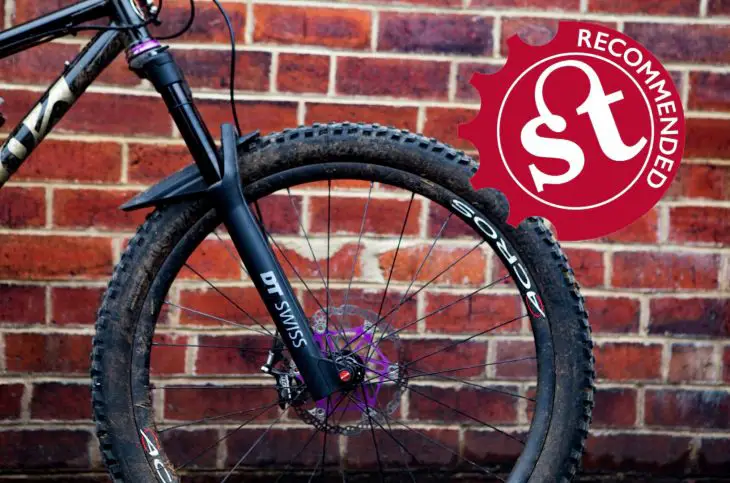
Review Info
| Brand: | DT Swiss |
| Product: | F 535 ONE |
| From: | Madison, madison.co.uk |
| Price: | £924.99 |
| Tested: | by Tom Hill for 5 months |
Comments (13)
Leave Reply
Post Comment
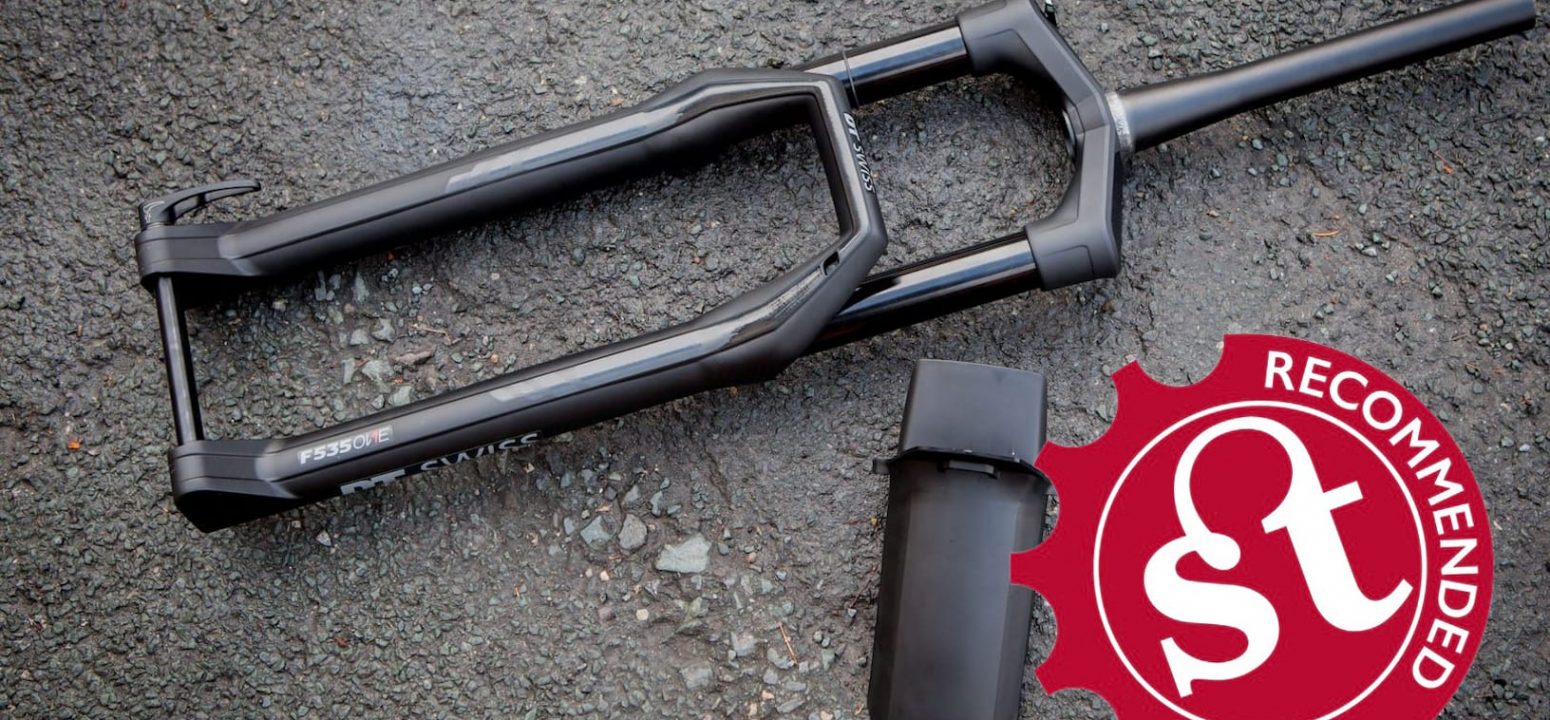

Well Done DT Swiss, plus a well written article too.
Nice article. Big question is always do you have to send it away to be serviced every 15 hours or is there a certain amount of work you can do yourself?
Asked in 18 Bikes when I was in there, full damper service every 200 hours or annually apparently.
Lower leg services look pretty easy to do at home according to the video on DT’s youtube: https://www.youtube.com/watch?v=NrY-S1ZUXW4
Sounds excellent. 27:5+ up to 2:8! i use 3:0 nobby NICs though.
This sounds right up my street.
Maybe I’ve become de-sensitised, but £925, whilst a lot of dosh, wasn’t as bad as i was expecting (so fell into the ‘hmm gonna see about this one’ rather than a ‘you’re joking’ level. )
Could be the perfect upgrade over the FIT 32s on the bike – perfect timing as they are getting a bit shot.
Questions re servicing. Who / where ? are Madison (or other ?) gearing to do them without waiting weeks every time a small component is needed ?
TF tuned are DT’s UK service centre so they’re the ones who’ll do the full annual damper service and any warranty work.
Madison are holding basic spares and parts for lower leg services. (Seals, Oil, Axles etc)
Really not sure I would want to be sending it away annually for a full damper service
and on that service video – is it my imagination or is that a reverse thread on the lowers? (or is the video just mirrored)
Wow. A long while coming, but certainly sounds like it should be on people’s shortlists.
I appreciated the article as well – a thorough and balanced write-up.
Loving the build on that Cotic – looks like a whole heap of fun.
Leffeboy – don’t all fork brands recommend that to be done? Not really a home job for most people.
T10 may look neat, but would T25 have been more durable and less prone to grit blocking it up?
Other than that, I like the less adjustment is more approach.
Guess a T25 wouldn’t have fitted inside the axle.
At the very low torques youll be using it for, T10 should be fine.
Any sign of 26” in the range looking for replacements for my worn out 5 year old pikes for me Rocket.